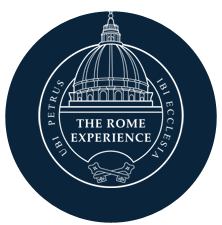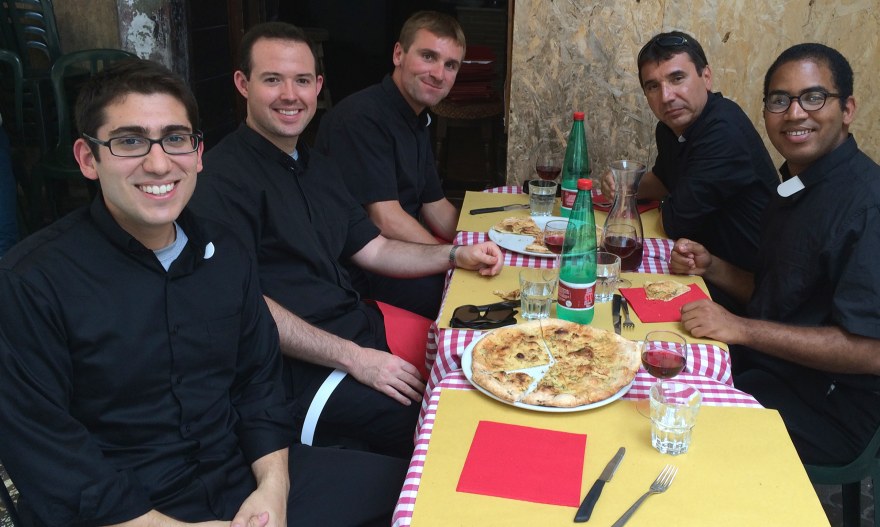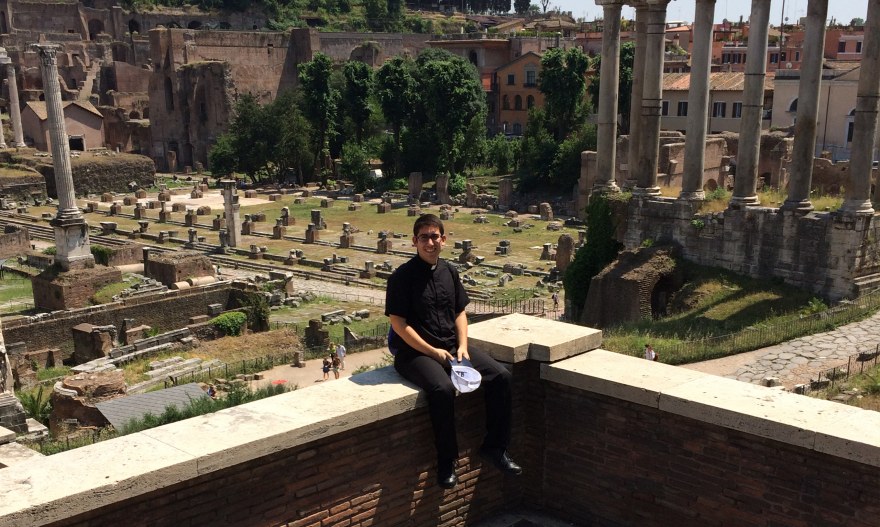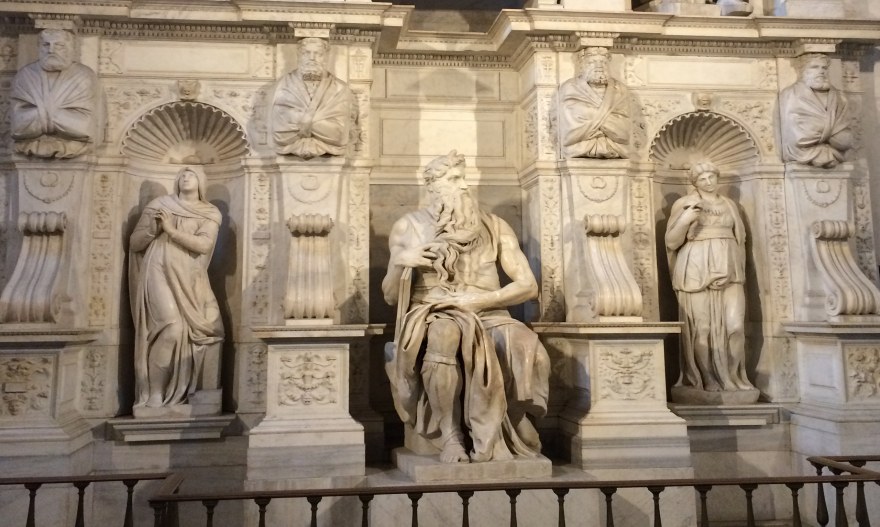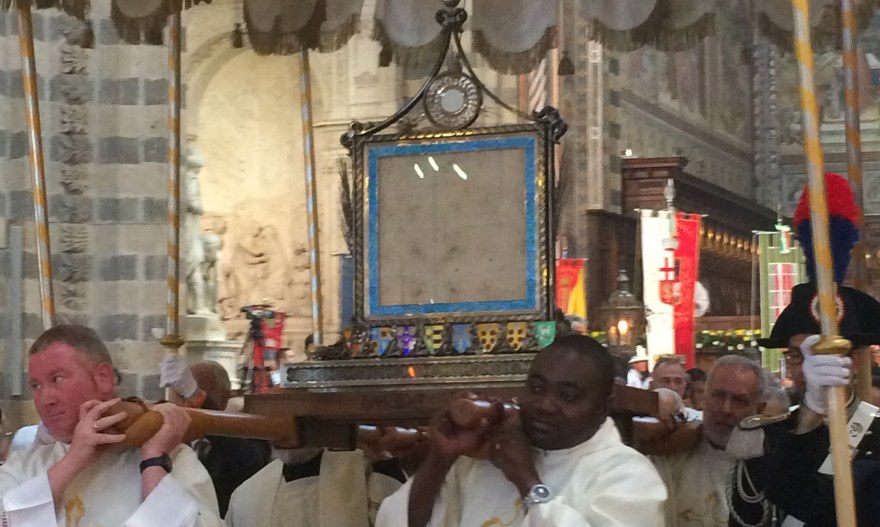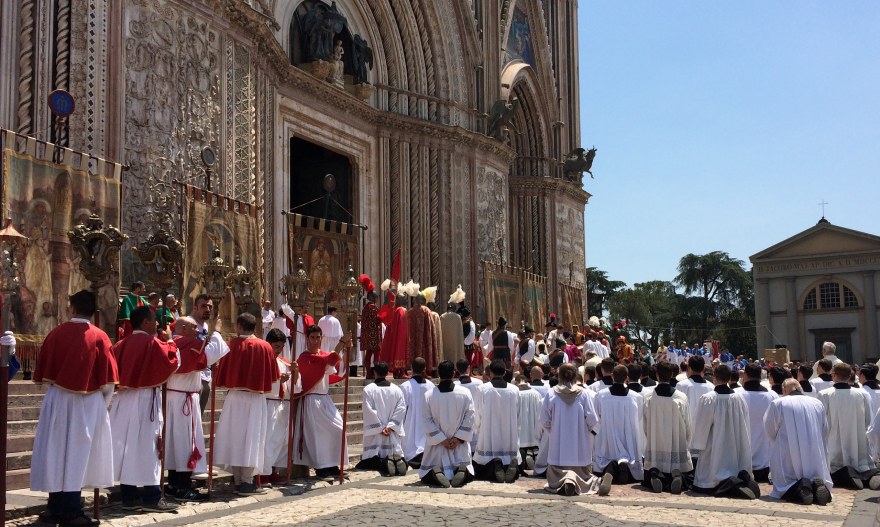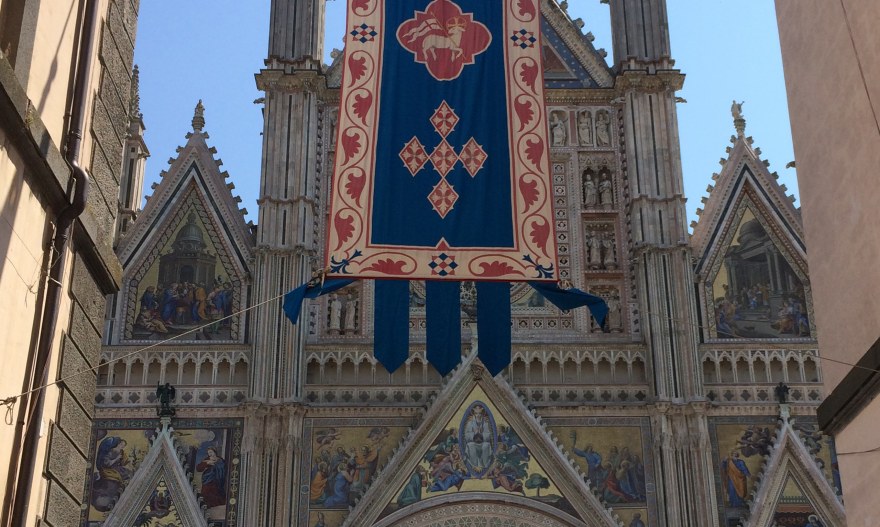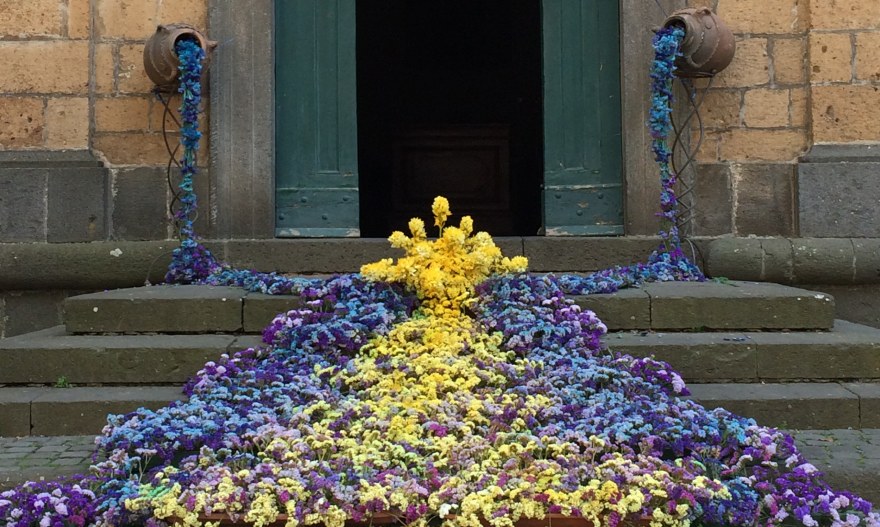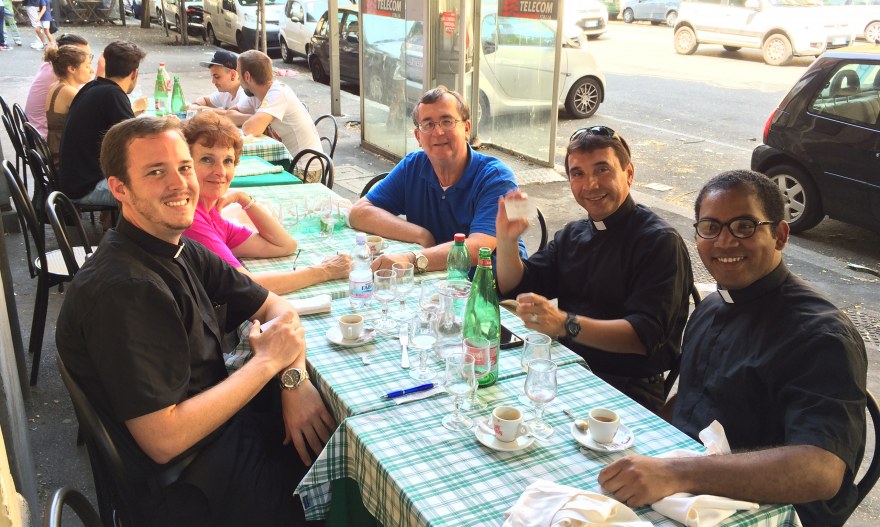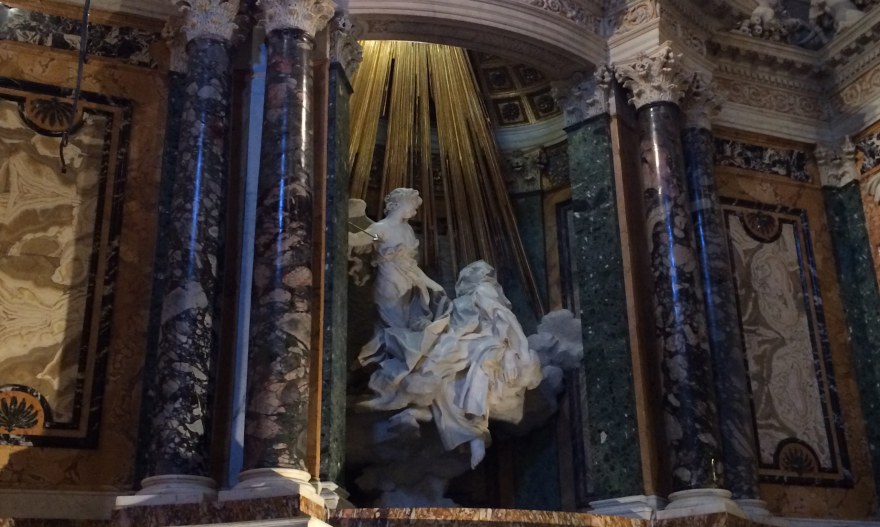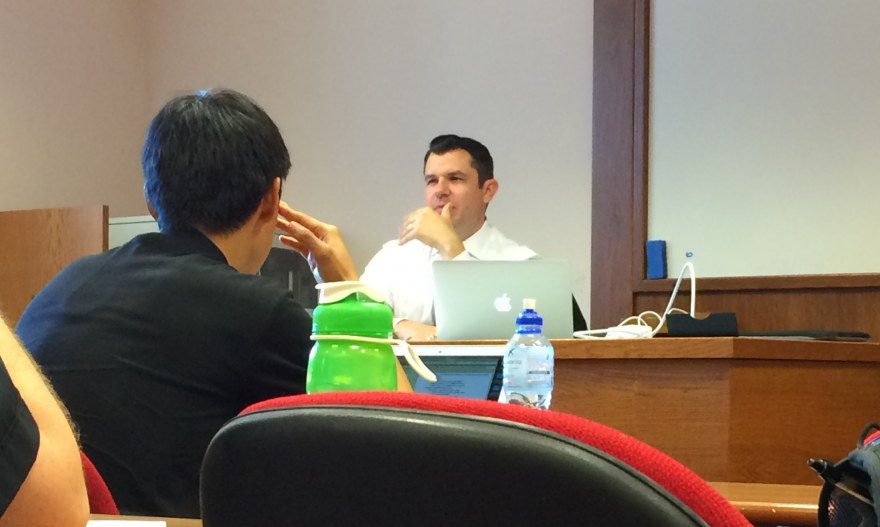“Top Five” 2015: Week Four
by Brian German (Archdiocese of Miami)
Top Five Highlights of Week Four:
1) Sunday- Orvieto
The Cathedral in Orvieto houses the corpora of the original miracle that inspired the feast of Corpus Christi. Therefore, they had planned a large Mass followed by a Eucharistic Procession. A group of us decided to go to Orvieto, an hour and fifteen minutes away by train.
We boarded an early train out of Termini, and after being waylaid by a gypsy woman, we almost missed our train. Providentially, we were able to find the train and board it without too much drama. We arrived in the Orvieto train station around 9am, and then took the cable car/train (the Fulminico) up the mountain to the hilltop town of Orvieto.
The streets were closed to cars, and all through the town there were banners of different colors and symbols. Each parish in Orvieto had their own flag with their coat of arms and had decorated their church with flowers. As we arrived, we entered through the side door, and unfortunately arrived late. Cardinal Walter Kasper was the main celebrant of the Mass, and it was in Italian. So I was not able to understand much of it. However, the cathedral was built in a beautiful Gothic Style and the stones were two different hues of grey: light and dark. The effect was odd, it reminded me of the Cheshire cat from Alice in Wonderland. After the Mass, the procession began, the side door opened and the different parish groups, the different confraternities, and the many costumed participants walked in and down the central aisle. Most of the marchers wore medieval time period costumes. They were colorful and bright, and unique! There were the knights, the claymore bearers (think William Wallace big sword), the archers (robin hood), the many different pike men each group bearing a different variation of the weapon, and even hawkers, who processed with their birds upon their hands! The last and most important person was Christ. A baldacchino was set up and the consecrated host was enthroned above the corpora that was stained with the blood of Christ from the original miracle many centuries ago. It was a sobering experience.
As we left the church, we followed the procession and marched all through the town. The chosen path zigzagged through the medieval town stopping at the different parish churches. Cobblestoned streets strewn with flower petals, the jury rigged speakers along the path of the procession leading songs of praise and prayers for our Lord, and the many people who had come to watch, made the early rise and intense heat worth it all and then some.
As the procession came to an end at the entrance to the cathedral an hour or two later, Cardinal Kasper led the Benediction and Blessing. After which we dispersed and went to find food, we were extremely hungry. The group split up each of us desiring something different. Mark picked the restaurant, and he made a great choice! It was restaurant and grocery store, selling locally made products. The food was good, and they gave us some of their house olive oil to sample, was which amazing. Before leaving I bought a can, and our waitress in the spirit of Corpus Christi, gave all of us a smaller portion of olive oil as a free gift. As we returned to Rome, we all fell asleep, it had been a long day.
2) Wednesday- Santa Susanna, St. Maria de Vittorini, Beer with Dr. Marshall
Today was a day of adventure. We ate lunch quickly and made our way to Victor Emmanuelle Plaza, where a beautiful white palace sits on a hill. We headed straight for the side of the palace, up 5 flights of purgative stairs and into the church of St. Mary of the Ara Coeli (Altar of Heaven). I prayed at the tomb of St. Helen and lit a candle. We saw the wooden baby Jesus that they used in procession, a replica of the original used by a saint to evangelize the people of Rome. Then we exited out the back and into the Forum Romanum. We entered the dubious sight that claimed the heritage of Peter’s imprisonment, (it cost 3 Euros to enter to view a rustic looking well.) Then we walked to San Pietro in Vincoli (St. Peter in Chains), passing by the Coliseum. As we approached the church, we went up a flight of stairs under a short tunnel/wall, which was covered in ivy, at the midpoint of the stairs there was an artist selling beautiful water color paintings of the amazing sights of Rome. Then at the entrance to the church, there was a sign saying, “Free Admission, do not pay anybody for admission.” We all had a chuckle at the sign. As we entered, we saw the relic of St. Peter’s chains. Then we casually turned our head, and there is the famous Moses! A crowd of people was frantically taking pictures of it. While beautiful, it felt so unreal to be standing in front of it, usually we think of it as being larger than life, but our ideas of it don’t always match reality.
We left and then made our way over to Santa Maria in Vitoria (St. Mary in Victory), a long walk later, we arrived at this small and unassuming Baroque church. To our right was St. Joseph receiving a vision in his sleep, and to our left was St. Teresa in Ecstasy. My first thought was, how small it really was. Usually pictures of it make it seem that it is gigantically huge, but it wasn’t. Also, it was situated over the altar and the sides of the statue are covering up by the walls of the church, therefore, one could only see the statue by standing almost directly in front of it. We stayed here and did our mental prayer and our evening prayer.
Almost directly opposite is the domed church of St. Bernard. Rivaling the beauty of the Pantheon, but not as big, we stumbled into this church at the suggestion of Dr. Marshall. When we entered, the dome was a complete surprise. Not only that, but it was quiet. I repeat, quiet. That is usually not the case, for churches in Rome are loud and usually full of tourists. This church was empty, quiet, and prayerful. I wish we had done our mental and evening prayer here instead of St. Mary in Victory. This church also boasts the only depiction of the death of St. Joseph and is run by the Benedictines.
On our way back, we stopped by the bar and got a round of some ice-cold beer, the only thing better than touring Rome is a cold beer with friends after touring Rome.
3) Thursday- lunch with Fr Anthony and Spiritual Direction
We forwent lunch at Santa Croce for lunch with a priest friend of ours. Fr. Anthony Ustick from the diocese of St. Petersburg in Florida was ordained to the priesthood May 16th. We studied together at the major seminary in Boynton Beach, and we would often go to the gym and workout together. Unfortunately, I could not be present for his ordination, but I was thrilled to hear that he would be coming to Rome. After finding a time that worked for both of us, we decided to have lunch together. I was recommended a place called, “Hosteria de Dino e Toni.” Nobody spoke English, that’s usually a good sign that the place caters more to locals than to tourists, making it more authentic, and usually a little cheaper.
The waiter came out with a delicious apperitivo, a mixture of pizza, fried custard, fried olives, and prosciutto. For the primo piatti, we ordered from the menu of the day, and everybody got two plates of pasta, a white carbonara and red tomato with pieces of bacon. I ordered the amatriciana, which was a large serving of pasta with tomato sauce and pieces of bacon. The House red wine was also good, and it paired great with the pasta and the appetizers.
We parted on the Square in St. Peter’s. He was going on the Scavi tour while I had to return to Santa Croce for Spiritual Direction. I decided to take the scenic route and walked along the western shore of the Tiber, passing Castel Sant’Angelo, and then walked over the bridge to the college. I met with Fr. Robert Gahl, who was one of our instructors, he has a dry and sharp sense of humor, so I naturally got along with him.
On the Rome experience, the focus is first and foremost spiritual formation. Every day we begin with morning prayer at 6:40, followed by 30 minutes of mental prayer, followed by Mass, with 10 minutes of silence. In the evenings, we have evening prayer at 6:45pm followed by 30 minutes of mental prayer, dinner, then a get-together on the verandah overlooking St. Peter’s. In addition to all of this structured prayer time, we also try (Rome is crazy) to meet with a Spiritual Director almost every week. A lot of time and effort is put into our prayer life, which is a good thing.
4) Friday- lunch with the guys from the NAC, laundry pick up
The North American College (NAC) is the American college here in Rome, if a seminarian is sent to study in Rome, they will come to the NAC. It is an oasis of Americana in a country that does not understand that football is actually played with your hands (hehehe!) Anyway, some of our classmates from the minor seminary were sent here to study. We caught up with them early in the Rome experience, but tomorrow, they would be flying home. So as a parting farewell, we decided to have lunch with them. They took us to a pizzeria off the beaten path, which are usually the best ones. They have no pretensions and are cheaper and have better food than the tourist traps around Rome. It was called “La Focaccia,” and they had a coal-fired oven in the center of the restaurant. We thankfully sat outside, it was hot day, and an oven would have only made it worse. The appetizer was of course focaccia bread, and their house wine was cool and refreshing, for they had somehow made it sparkling. It was great. The pizzas were also amazing. Omar and Peter ordered the pear and gorgonzola pizza, which was unique and authentically Roman. I decided to order the pizza al diavola, a cheese pizza with slices of ham, and on the side olive oil mixed with red peppers seeds. I dumped a lot of the olive oil/pepper mixture on top of the pizza, and man was it spicy!
We then went for dessert. In Piazza Navona, there is a place (Tre Scalini) that makes these original desserts from the 1940’s, they are called tartufo. It is rich chocolate brownie with chocolate cream topped with chocolate flakes, and a dollop of whipped cream. The best part is a rum-filled cherry in the middle of the tartufo. We ended our time together in Rome, hoping to see them soon in the States.
I then had to pick up laundry. Laundry at CIAM is the only negative on a long list of positives. Some guys choose to wash their clothes in their sinks, others prefer to take it to a laundromat. For nine euros plus two euros for folding, I had my laundry done. It leaves my clothes clean, well dried, smelling nice, and mostly wrinkle free. I met Brad, another guy on the Rome Experience, outside the laundromat, and he informed me that it was currently closed. Looking again at the sign, we realized that she must be on a quick break, (in Rome, such things are common and expected.) I looked over and saw a bar, I invited Brad over for a quick coffee, might as well sit while we wait and enjoy some coffee. He accepted the invitation, and we sipped our drinks chatting about Rome, and his upcoming trip to Turin. Five minutes later the owner showed up and I picked up my freshly laundered clothes, while Brad left his clothes to wash.
5) Monday- first day of classes
Monday was the first day of actual classes. We had attended a brief two-day lecture on human formation and the virtues connected to the teachings of St. Josemaria Escriva, which while long-titled was actually enjoyable. Today, we began the more structured and long-term classroom teaching. Our first two hours, Dr. Marshall Taylor from the St. Thomas Aquinas Institute, began his class on the Historical Theology of Rome. “Why Rome?” “Why did God choose Rome to be the place where the office of Peter was established, why not Jerusalem?” Dr. Marshall’s response: God sent his Apostles to Rome to use Roman culture and ideas to structure his Church and especially the office of the Pope. Our second class was an introduction into architecture and its theological dimensions. Mr. Matthew Alderman an Architect who works with many Catholic parishes to build beautiful churches took us through some of the more interesting bits of church architecture and its significance.
Because of the busy weekend and the first day of classes, many of us, including myself, decided to take it easy and we came back early to CIAM and rested up and took care of small miscellaneous tasks.
